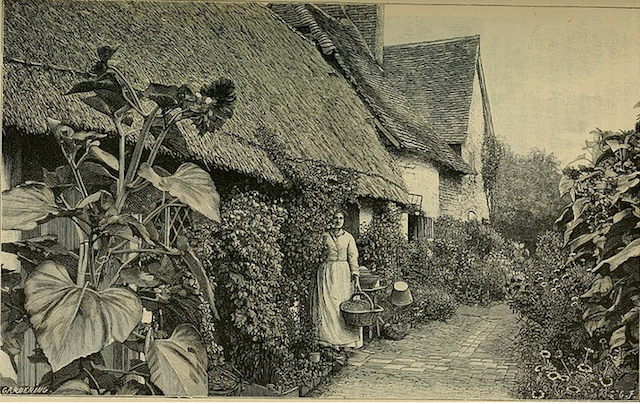The Carroll Garden Club held their August meeting at the regular date at the home of Mrs. Preston Myers.
The meeting was called to order by the President, Mrs. Harry Fogle. The poem “Tues” was repeated in unison. Roll Call and Minutes were read by the secretary, also a financial report as this was the end of the year for the present officers.
Business was next discussed. It was decided that it was too late to work out any project for display at the Carroll County Fair. Anyone who had an opportunity to send flowers for display were advised to do so. Mrs. Myers Englar invited (us) to meet with her for September. The meeting (is) to be in the form of a tour of all the members gardens, meeting at the home of Mrs. G.S. Lafarge at 1:30 P.M. instead of our regular time, our journey ending at Mrs. Englar’s for our business session.
A short discussion was held on Table Decorations; this subject will be worked out at later meetings.
This was the meeting for the election of officers. A motion was made that the old officers be retained for another year. This motion was seconded and voted upon. The officers being as follows:
- Mrs. Harry Fogle–President
- Mrs. Myers Englar– Vice President
- Mrs. Charles Hesson–Secretary & Treasurer
The dues were also collected from members present.
We were very glad to have with us again Miss Grace Fox who continued her interesting talk on English Gardens. We are indeed grateful to Miss Fox for giving us her time for these informal lectures. Pictures were passed to illustrate the palaces and gardens of which Miss Fox spoke.
The afternoon was closed by the hostess serving refreshments, after which the meeting adjourned.
Mrs. Harry Fogle, President
Mrs. Charles Hesson, Sec & Treas.
Editors note: A major proponent of the English garden style was William Robinson.
From Wikipedia:
William Robinson (5 July 1838 – 17 May 1935) was an Irish practical gardener and journalist whose ideas about wild gardening spurred the movement that led to the popularising of the English cottage garden, a parallel to the search for honest simplicity and vernacular style of the British Arts and Crafts movement.[1] Robinson is credited as an early practitioner of the mixed herbaceous border of hardy perennial plants, a champion too of the “wild garden“, who vanquished the high Victorian pattern garden of planted-out bedding schemes.[2] Robinson’s new approach to gardening gained popularity through his magazines and several books—particularly The Wild Garden, illustrated by Alfred Parsons, and The English Flower Garden.
Robinson advocated more natural and less formal-looking plantings of hardy perennials, shrubs, and climbers, and reacted against the High Victorian patterned gardening, which used tropical materials grown in greenhouses. He railed against standard roses, statuary, sham Italian gardens, and other artifices common in gardening at the time. Modern gardening practices first introduced by Robinson include: using alpine plants in rock gardens; dense plantings of perennials and groundcovers that expose no bare soil; use of hardy perennials and native plants; and large plantings of perennials in natural-looking drifts.
Here is one of his books and an illustration from within. This link allows you to read it in entirety online.
Book: The English Flower Garden and Home Grounds
Cottage Garden at Maltingly



